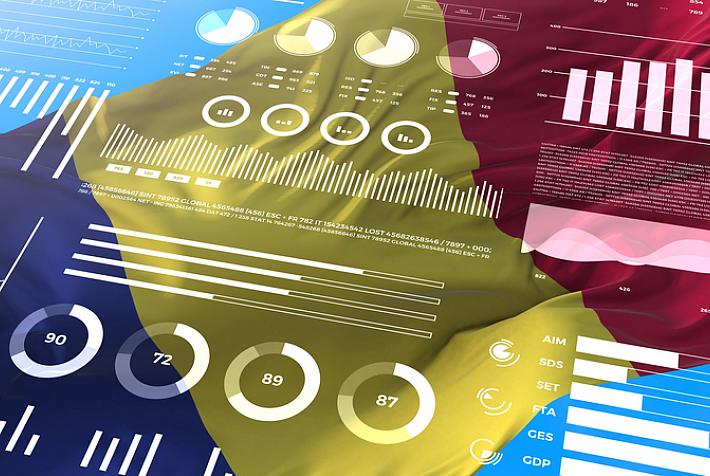Romania’s economy surpasses that of Czechia after 4.1% growth in 2019

Romania’s Gross Domestic Product (GDP) increased by 4.1% to RON 1.05 billion (EUR 222 bln) in 2019, according to preliminary data published by the local statistics office INS.
Thus, Romania’s economy surpassed that of Czechia, reaching the 13th place in the European Union (EU) in 2019, after surpassing Greece in 2017 and Portugal in 2018, according to Andrei Radulescu, chief economist of Banca Transilvania, local Economica.net reported.
The Government hopes for 4.1% GDP growth this year as well, but independent analysts are more conservative. Banca Transilvania estimates that the domestic economy could grow at an average annual rate of 3.8% between 2020-2022, an evolution supported by the continuation of investments (average advance of 5.4%) and the improvement of the net external demand.
In 2019, households’ consumption increased by 5.9% in volume terms (comparable prices) compared to 2018 and contributed 3.7 percentage points (pp) to the overall GDP growth. The investments increased even more, by 17.6% compared to 2018, and contributed another 3.7 pp to the GDP growth. The external demand - or net exports (which were negative, in absolute terms), had a negative contribution to the GDP growth - in the sense that the net imports have increased in 2019 compared to 2018.
Last year, net imports accounted for some 4% of GDP - meaning that the country’s residents (natural, legal and public entities) used, in addition to the goods and services produced locally, another 4% from imports. The rise in net exports thus had a negative contribution of 1.7% to the GDP growth.
On the formation side, the sectors of services, constructions and real estate had the most significant contributions to the rise in the gross added value. The sector of constructions generated 16.8% more added value, contributed 0.9 pp to the GDP growth and accounted for 6.4% of the total GDP. The sector of services to households generated 4.8% more added value and contributed 0.9 pp to the GDP growth.
The tax collection improved as well, as the net taxes expanded by 9.5% in volume terms and contributed another 0.9 pp to the GDP growth.
Notably, the industry, which has the largest share in the GDP, had a negative 0.3 pp contribution to the GDP growth as the added value it generated decreased by 1.5% compared to 2018.
editor@romania-insider.com
(Photo source: Natanael Alfredo/Dreamsime.com)












